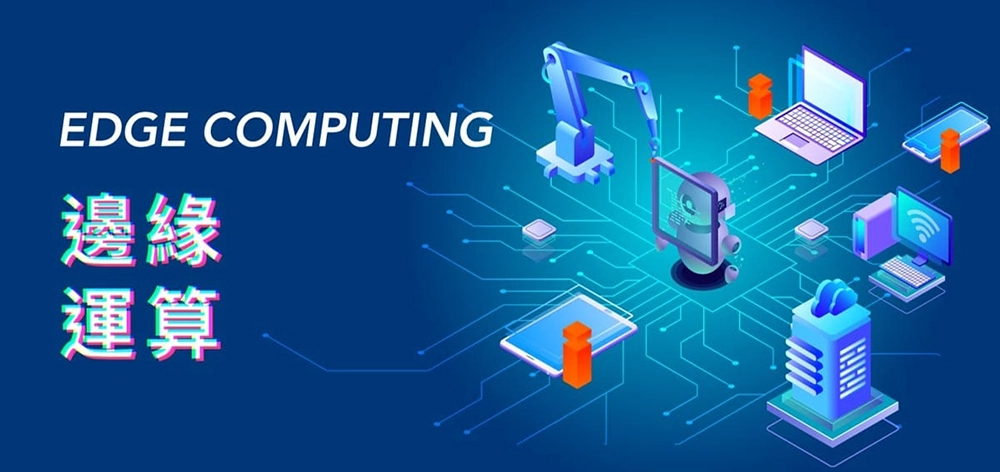What is Edge Computing?
FAQ | What is Edge Computing?#IoT
#AI
Edge computing reduces data transfer latency and alleviates network bandwidth congestion. It decentralizes large-scale processing from central nodes into smaller, more manageable parts distributed across edge nodes for localized processing.

Edge Computing
The Bridge to Smart Manufacturing: Edge Computing, IoT, and AI
Edge computing reduces data transfer latency and network bandwidth load.
Edge computing is a decentralized computing architecture that moves the processing of applications, data,
and services from central network nodes to edge nodes. Instead of relying solely on centralized nodes,
edge computing distributes workloads into smaller, more manageable parts for localized processing.
Edge nodes are closer to user devices, enabling faster data processing and transmission while reducing latency.
In this model, data analysis and knowledge generation occur closer to the data source, making it ideal for big data processing.
Source: Wikipedia
Why is Edge Computing Needed?
The Key to Faster Internet Responses
Handling Large Data Volumes with Faster Processing Speed
As chip sizes continue to shrink, network resolution requirements increase, leading to exponentially larger data volumes.
The demand for high-bandwidth applications such as 4K video, 3D rendering, and VR gaming continues to rise.
Edge computing processes large datasets at the source, reducing network bandwidth usage and latency,
ensuring low-latency user experiences. By processing data closer to the end user, edge computing
becomes a critical technology for accelerating internet responsiveness.
Market Value of Edge Computing
Stronger Than Cloud Computing
Major Tech Companies Investing in Edge Computing
According to market research firm TrendForce, the global edge computing market is expected to grow at a
compound annual growth rate (CAGR) of over 30% from 2018 to 2022. Meanwhile, Grand View Research estimates
the edge computing market value could exceed $3.24 billion by 2025. Why is edge computing creating such a huge opportunity?
Edge computing follows a localized processing model, performing computations near the data source before
sending optimized results to the cloud. With the rise of IoT and AI, edge computing is an ideal architecture
for deploying IoT applications, such as robotic arms, autonomous vehicles, and AR solutions. These applications
demand real-time image processing and recognition capabilities, requiring response times in milliseconds or even microseconds.
Relying solely on cloud computing for large-scale data processing is insufficient due to latency and bandwidth constraints.
Edge computing outperforms cloud computing in terms of real-time processing speed. Recognizing its potential,
major cloud service providers like Amazon have begun launching non-cloud solutions, such as AWS Greengrass and Snowball Edge.
Architecture Overview
Edge Computing and IoT




Cloud on the Ground
Edge IoT
Multi-Processing Capabilities of Edge IoT
Edge computing can take the form of large-scale computing devices or small-scale computing units, including mobile devices,
operating within a localized network. Because these devices are in close proximity, data transmission via Bluetooth,
Wi-Fi, or LoRa is significantly faster.
Edge computing operates as a localized processing system, often referred to as a "cloud on the ground" in contrast to cloud computing.
Security is a crucial concern in data collection and processing, and since edge computing handles data locally,
it provides an additional layer of security.
In Industry 4.0, edge computing within IoT systems is far more complex than traditional distributed architectures.
As industrial manufacturing systems become increasingly sophisticated, the demand for real-time inspection results continues to grow.
This increases power consumption and integration complexity from lower-level processing to upper-layer transmission.
Therefore, IoT can be categorized into two main types: one that processes steady-state signals, using sensors to collect machine
physical data and displaying analyzed results in monitoring systems or human-machine interfaces. This type of processing is relatively straightforward.
The other category involves dynamic signals, where large volumes of physical and dynamic data collected by sensors undergo multiple
layers of processing before being transformed into actionable insights. This multi-layered processing forms the foundation of Edge IoT,
making it significantly more complex than traditional IoT, which primarily handles simple signal transmission and filtering.
Edge Computing and AI
Edge AI
Key Features of Edge AI
1. Real-Time Processing: Edge AI performs computations on local devices, enabling low-latency responses, ideal for applications requiring instant decision-making.
2. Enhanced Privacy: Since data does not need to be sent to the cloud, Edge AI provides better privacy protection.
3. Reduced Bandwidth Demand: Decreases the need for continuous data transmission between devices and the cloud, reducing network load and costs.
4. Offline Capabilities: AI functions can operate on devices even without an internet connection.
The shift from mass production of identical items to smaller, more customized manufacturing challenges both workforce skills and machine capabilities.
To maintain yield stability in smaller production runs, AI implementation has significantly improved production line efficiency.
By leveraging edge computing, systems can establish various models and autonomously learn through AI algorithms, effectively enhancing smart production lines.
Gude Technology’s online monitoring and sensing systems utilize edge computing to accelerate data transmission, enhance security,
and address vibration measurement challenges in semiconductor and industrial equipment.
Edge computing bridges the gap between IoT and AI, forming the foundation for smart manufacturing.
Proactive Detection Methods
Most existing production line monitoring systems rely on AOI (Automated Optical Inspection),
which only detects defects after they have already occurred, leading to waste and errors—this is a "passive" detection method.
A more effective approach is to proactively prevent defects before they occur, improving yield rates
and reducing scrap. Edge IoT enables real-time defect detection on production lines while also identifying
abnormalities in manufacturing processes, preventing defects before they arise.



